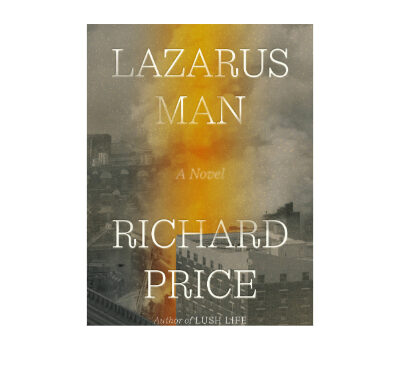

Is there a better writer of urban American stories than Richard Price? His resume is hard to beat: To episodes of HBO’s “The Wire,” and “The Night Of,” and novels like “Clockers,” “Lush Life,” and “Freedomland,” fans can now add “Lazarus Man.”
The story opens with a boom, literally. A five-story tenement in East Harlem collapses, killing dozens and leaving survivors milling about in a “mix of hot tar, cement dust and burning trash.” Into that setting step our main characters: Royal Davis, the owner of a funeral home forced to chase after tragedies for bodies; Mary Roe, a city detective working the community affairs beat; Felix Pearl, a 20-something new to the city who’s talented with a camera; and Anthony Carter, middle-aged, unemployed, and six months sober, found in the ruins days after the explosion and who becomes the novel’s title character.
Price’s screenplay writing experience is noticeable as he hops from character to character, sometimes offering just a paragraph or two about their past and what’s happening to them in the present before skipping to the next. It’s jarring at times, but you fall into an easy rhythm as the pages turn. All the characters collide at one point or another following the explosion, and the novel draws you in with its authenticity.
Here’s Price inside Felix’s head as he watches the “gigantic neighborhood simpleton, Robert Cornish, aka Green Mile, aka the Rooster” wandering the streets before his 80-year-old aunt comes outside to retrieve him: “Not to say that his neighbors were nonstop hearts and flowers toward each other, but no one ever passed judgment on you for just being who you naturally were.”
It’s the details. too, that Price always nails. Mary, reminded of her time working an open-air morgue outside Bellevue Hospital after the 9/11 attacks: “(She’d) been part of an assembly line of detectives set up to collect whatever IDs they could from wallets and phones, jewelry and watches, the constant sharp snap of fingers being broken in order to remove rings still with her after all these years.”
The book is more of a tapestry than any traditional storytelling structure. There’s no great mystery to solve besides how Anthony survived the explosion, and even when the truth is revealed, most readers will have known it long before. Price’s overarching message is a simple one amid the hard-luck stories: People want someone to root for them. Or as Anthony, aka Lazarus Man, tells a crowd at a community event following another death on the streets outside the projects: “Who here, not just in these houses, but anywhere in the world young hearts need to be nurtured and protected, couldn’t use a helping hand?”




